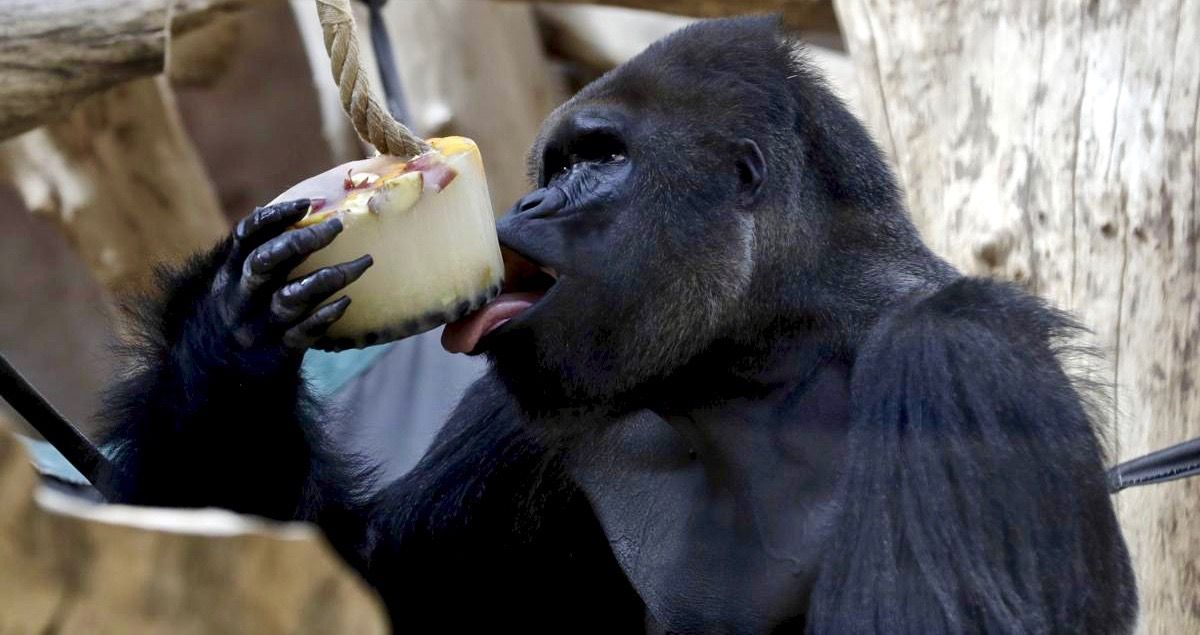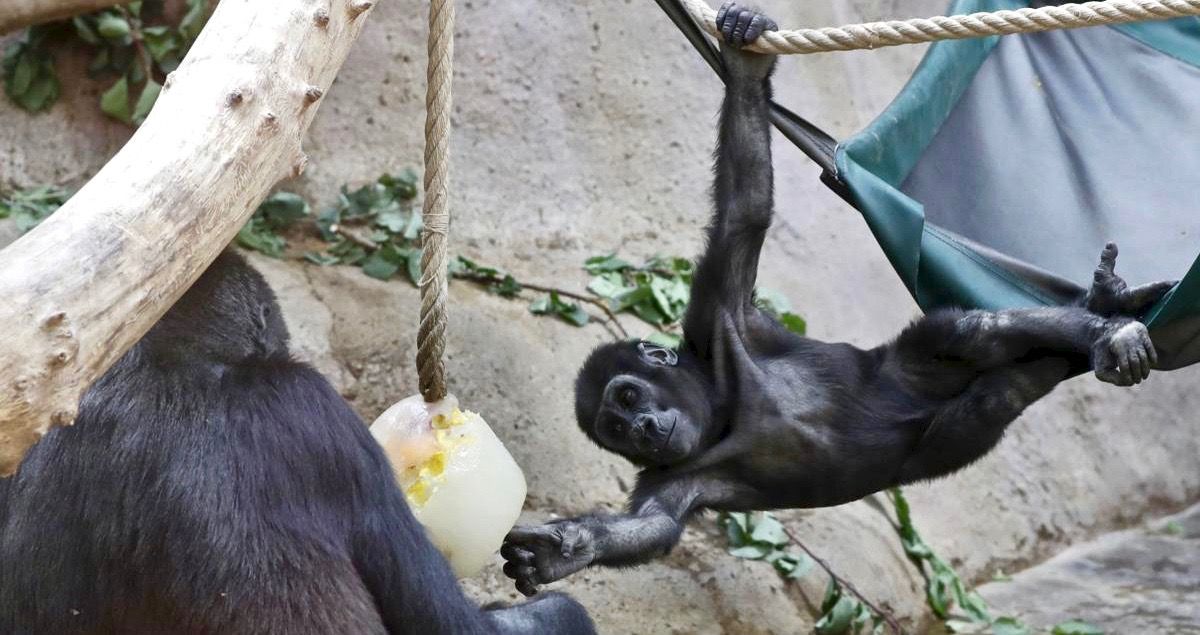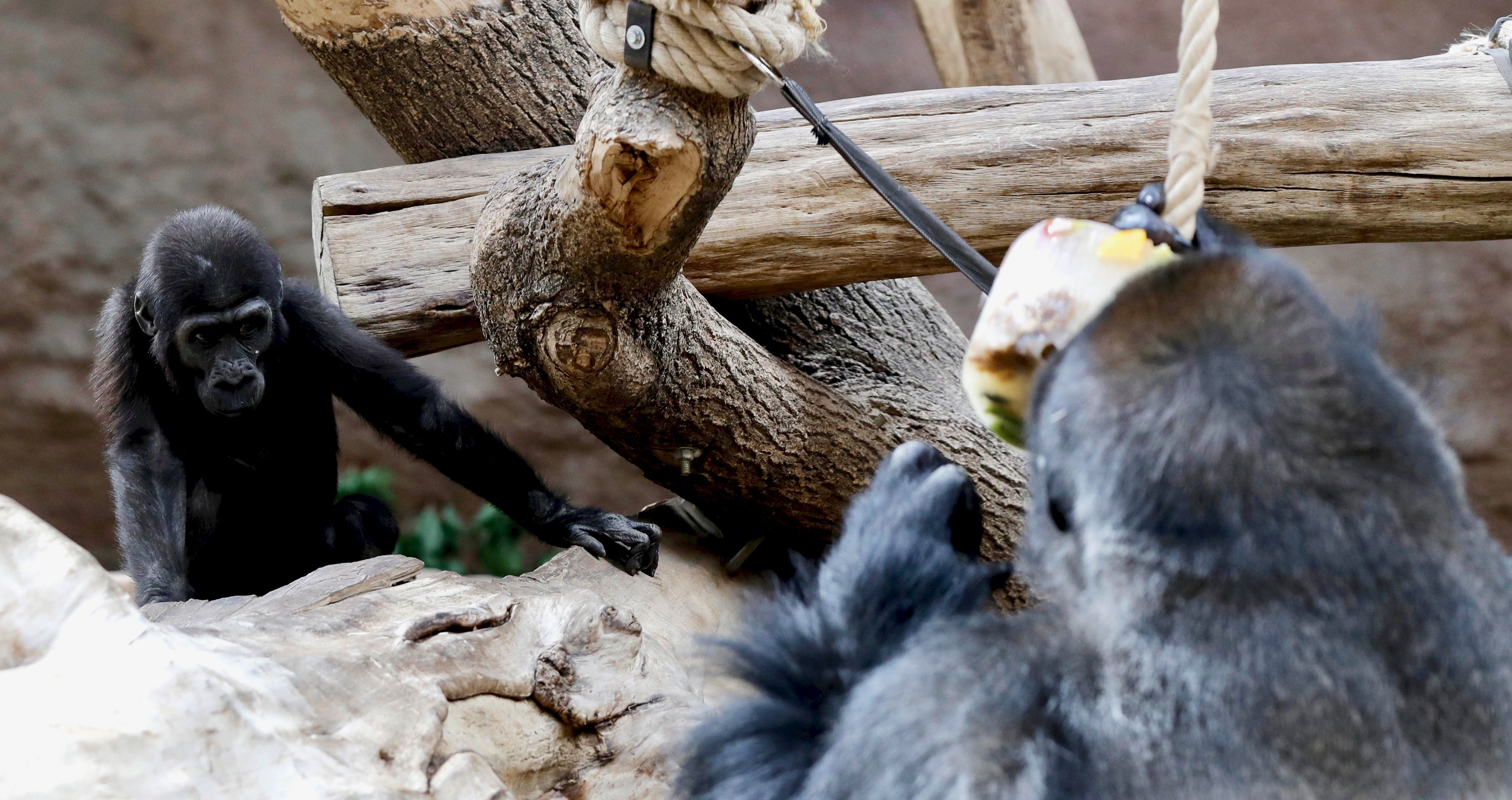This summer, when half the world seems to be enduring a heat wave, gorillas at Prague's zoo are being given a rare treat to keep cool: fruit sorbet.
The zoo, which has eight Western lowland gorillas, has been serving the great apes the frozen snack daily in small plastic pots. Now, zookeepers had added another twist to their summer dessert menu, doling out large blocks of frozen water with a variety of fruits. The blocks are being hung from ropes in the gorilla enclosure.
Zookeeper Vit Lukas, who specializes in primates, says that the zoo generally tries to avoid fruits with high sugar content, such as bananas and grapes, in order to prevent obesity. Regardless of its content, the apes seem to enjoy the frozen treats. Richard, a dominant male in the group, is seen grabbing a massive chunk of ice and licking it while trying to get at the fruit. His two-year-old son Ajabu tries to pry a piece for himself but his father is not sharing.
The hierarchy in the group of eight is very clear, as the other seven gorillas are forced to share a single block of sorbet. "Richard tolerates (Ajabu's) close presence," Lukas says. "But the ice cream belongs to him."
The western lowland gorilla is the most common and widespread of all gorilla subspecies. Populations are found in Cameroon, the Central African Republic, the Democratic Republic of Congo and Equatorial Guinea as well as in large areas in Gabon and the Republic of Congo. Though the exact number of western lowland gorillas is unknown, given the fact that they live in dense and remote African rainforests, there are still abundant populations in the swamps and forests of the Republic of Congo.
RELATED: Lions, Tigers, And A Jaguar Escaped A German Zoo, Forcing Residents Inside For Hours
The Western lowland gorilla differs from other gorilla subspecies because of its smaller size, brown-grey coat and auburn chest. Their skulls are also wider with more pronounced brow ridges and smaller ears. According to the World Wildlife Fund, “Large numbers have not protected the western lowland gorilla from decline. Because of poaching and disease, the gorilla’s numbers have declined by more than 60% over the last 20 to 25 years. Even if all of the threats to western lowland gorillas were removed, scientists calculate that the population would require some 75 years to recover.”



